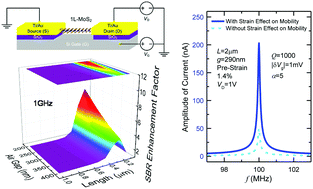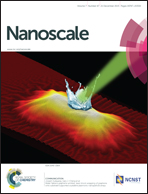Electromechanical coupling and design considerations in single-layer MoS2 suspended-channel transistors and resonators
Abstract
We report on the analysis of electromechanical coupling effects in suspended doubly-clamped single-layer MoS2 structures, and the designs of suspended-channel field-effect transistors (FETs) and vibrating-channel nanoelectromechanical resonators. In DC gating scenario, signal transduction processes including electrostatic actuation, deflection, straining on bandgap, mobility, carrier density and their intricate cross-interactions, have been analyzed considering strain-enhanced mobility (by up to 4 times), to determine the transfer characteristics. In AC gating scenario and resonant operations (using 100 MHz and 1 GHz devices as relevant targets), we demonstrate that the vibrating-channel MoS2 devices can offer enhanced signals (than the zero-bandgap graphene counterparts), thanks to the resonant straining effects on electron transport of the semiconducting channel. We also show dependence of signal intensity and signal-to-background ratio (SBR) on device geometries and scaling effects, with SBR enhancement by a factor of ∼8 for resonance signal, which provide guidelines toward designing future devices with desirable parameters.


 Please wait while we load your content...
Please wait while we load your content...